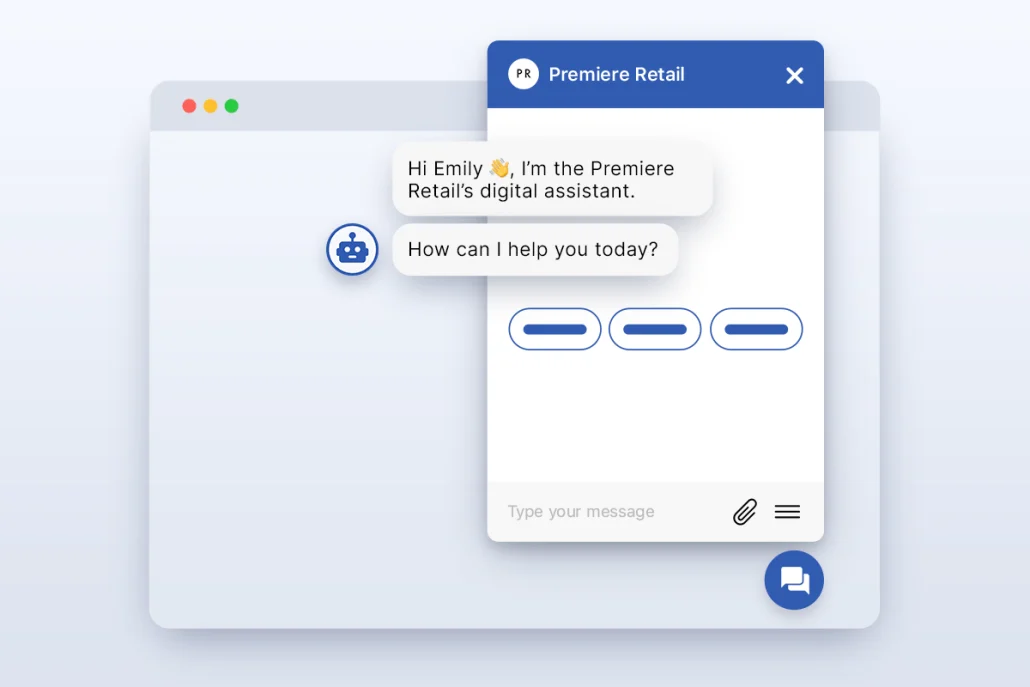A Practical Guide for Companies Navigating Declining Traffic
A drop in organic traffic can feel unsettling — especially if your team relies on steady inbound demand to drive sales. But declining traffic doesn’t...
Published: Dec 19, 2023 Updated: Jul 8, 2025
Online buying has become more sociable. Imagine discovering something you adore while perusing Instagram. You may finish your purchase using the app without visiting a product landing page. That’s precisely the kind of experience that social commerce provides. Removing unnecessary stages streamlines the purchasing process and increases the likelihood that customers will finish their transactions.
Therefore, the secret to harnessing social media for retail success may lie in social commerce.
In this piece, we detail commerce on social media and show you how your company can benefit from it. The direct purchase and sale of products and services through social media platforms is known as social commerce. It entails utilizing social media for purposes other than the typical discovery procedure. Instead, customers can finish the entire purchasing process on the same site. That implies consumers won’t have to switch from their favorite applications to purchase in a hurry.

Retailers may now use specialized social commerce solutions from leading social media sites. This leap covers websites and applications, including Facebook, Instagram, Pinterest, and TikTok. You may establish digital stores inside the corresponding platforms by utilizing these capabilities. In this manner, consumers may browse and purchase goods directly from these stores without visiting another website.
eCommerce is the general term for the online purchasing and selling of things. They sell through various digital channels, including websites, specialized merchant applications, and online marketplaces. On the other hand, social commerce entails direct sales via social media platforms. Social commerce is a subset of eCommerce, although it is distinct from eCommerce since social media is an online medium.
A social commerce platform is a tool brands and enterprises use to sell goods and services using social media platforms, content, and other features. Social media was formerly used as a marketing technique to raise sales and eCommerce conversion rates. However, with social shopping, customers no longer need to switch between platforms with social media e-commerce. Therefore, things have changed. The process of perusing the items offered by the companies, examining their details, and ultimately completing the checkout process takes place entirely within the social media platform.

So, we ask again, how can we exploit social commerce to our benefit? The advantages of social media in eCommerce that are most beneficial for e-commerce businesses include:
You may target users while they are actively looking for particular items by optimizing your website for search engine results and implementing pay-per-click (PPC) advertisements. However, social media also enables you to target people at the sites they frequent.

Almost all businesses may gain from social media marketing since 71% of individuals with Internet access do so on sites like Twitter, Instagram, and Facebook. This claim is particularly valid for online merchants, a subset of eCommerce that uses social networks.
Social media networks also provide a far less formal means of connecting with prospective clients than any other advertising medium, making it simple to have two-way discussions with people curious about your offerings. This conversation is another benefit of using social technology in eCommerce.
Social media is one of the most robust marketing tools for creating buzz. It’s the ideal location for advertising your brand-new business, goods, services, occasions, or special offers. It’s also excellent for having discussions with your intended audience. Establish a coherent voice and message for your posting strategy to increase brand recognition successfully. Publish in many forms and via various media. Participate in direct discussions with people and with trending themes and hashtags.

Social networking is the most effective advertising channel available. The worldwide reach of social media ads is enormous and continues to expand quickly. The ad kinds, KPIs, and conversion statistics you select for your social media advertising campaign will depend on your aims and the platforms you finance.
Since users of social commerce platforms may make purchases straight from the platform, it is simple to convert clients where they are. It removes the need for users to navigate to another app or website to locate the item they wish to purchase. As a result, it shortens the purchasing process, removing obstacles and friction.

You draw new followers within your funnel with your social media content. Additionally, providing social commerce allows customers to make purchases and write evaluations in one easy-to-find spot. Social media algorithms get a good signal when your involvement increases with fresh reviews. Somebody will likely find your content relevant to these algorithms, even more prospective clients.
What is social e-commerce?
Here are some of the most eye-catching social commerce platform examples that can help you up your social commerce game as well:
Sinless Beauty’s regular giveaways show that fans are willing to tag, share, and retweet content if doing so may result in a reward. Although some firms might be reluctant to join the freebie trend, there may need to be a more straightforward approach to increase awareness with little work significantly. In any case, giveaways are an excellent method to experiment with hashtags and see what kinds of goods are most appealing to your target market.
In a perfect world, social media feeds resemble an online storefront for your followers. Instead of bombarding followers with offers and bargains all the time, CLUSE’s Instagram is a brilliant example of thoughtful social purchasing. In addition to tasteful photography, CLUSE’s feed abounds in user-generated material that uniquely highlights their goods. They accurately and honestly convey how their customers engage with their products. The transparency that comes with this social technology in eCommerce is comforting for new customers when checking out their brand for the first time.
In addition to making most of their transactions on Facebook, consumers watch more videos than ever on the site. Brand sites using videos will captivate Facebook viewers twice as long as those without.
The lesson here is not to limit yourself to only watching videos. While bite-sized films and Facebook Live are popular ways luxury businesses like Burberry showcase their products, brands typically link video material with instructional and how-to information.
For every brand, social proof is a very effective marketing strategy. Using other people’s good reviews is a tried-and-true method to stand out in the highly competitive eCommerce industry.
For instance, Dollar Shave Club features unboxing pictures and encouraging consumer comments on a Pinterest board. This inclusion is a double-whammy of clever social media and e-commerce, combining social evidence with user-generated content.
The same guidelines that apply to in-store purchasing also apply to online shopping. Customers want a distinctive experience and suggestions. Customizing the buying experience for your consumers is always a benefit, mainly since 31% of eCommerce transactions occur from recommendations.
The “Fragrance IQ” test offered by Sephora is a great illustration of targeted social commerce. The short quiz consists of a set of questions designed to assist in identifying the perfect colognes or fragrances for each participant.

By integrating social media, customers may showcase their shopping carts and share their purchases on your eCommerce site. Even something as basic as social media buttons, like those used by Fab, may increase consumer conversion and brand awareness on social media.
A critical lesson from Ipsy’s viral glam package success is how they leverage social media to encourage customers to share their content. Ipsy, for instance, gives its users a chance to see what’s inside their glam bags before coming. To view them, post a link on Facebook Messenger. Thanks to this tactic, Ipsy and its goods can spread like wildfire, which is why “tell a friend” marketing is growing more and more popular in the eCommerce industry.
The following are some of the most anticipated and growing trends in regards to the future of social commerce to look forward to shortly:
Social media primarily drives the use of AR. When someone uses an AR filter or lens on Snapchat, Instagram, or TikTok, they frequently encounter AR for the first time. Retailers may capitalize on this trend by allowing shoppers to try on their items or by utilizing AR filters to display them. Companies may use augmented reality on social media to assist consumers in selecting the things they wish to buy. Customers may use the technology to feel things at home rather than going to stores to try them on.

Video is becoming a more important tool for customers to use as they buy. Limit your videos to one or two goods at a time and showcase them in use. Make a video with clickable calls to action that are interwoven throughout, keeping in mind interaction. Additionally, brands may adopt a social-first strategy by producing video consultations, behind-the-scenes livestreams, and customized product suggestions.

Working with micro-influencers can help smaller retail companies reach more significant portions of their target audience while maximizing the use of their marketing budget. Targeting various demographics is facilitated by micro-influencers, often catering to a specific audience type. Followers frequently perceive these influencers as more genuine than accounts with hundreds or millions of followers.
Genuine user-generated photographs from actual customers are frequently more powerful than heavily contrived product images. Indeed, most customers state that the material they want to see from businesses is user-generated images and videos. In this example of user-generated content, the brand tags the person and adds a hashtag to indicate to browsers that somebody discovered the brand/product via the hashtag. User-generated content should be a part of your product content management strategy.

One tool that contributes to the more social and engaging nature of social commerce is live chat. Consumers anticipate interacting with businesses via social applications, much like they do with friends. This anticipation is the perfect opportunity to give live chat to your social commerce clients if you haven’t previously. You must use such opportunities to engage with your clients to avoid losing money.
Social Commerce is the newest emerging business that can significantly help entrepreneurs increase their reach and scale their business. Following the above mentioned trends can quickly move their social technology in eCommerce game in the right direction. If you require management tools or systems to optimize your online presence, contact us at Pimberly for the best services near you.



Social media e-commerce: Getting started
What is social e-commerce? The strategies listed below should be able to assist you in creating your social media in eCommerce presence in the right way:
Define Your Social Media Goals
Brands may use social media and e-commerce in one of two ways: either to increase website traffic or sales. Even if each may be significant in its own right, it’s critical to choose which values are most important to you to use your money wisely. To ensure you’re taking action to get closer to your goals, you must define your goals before devoting time to strategy and execution.
Create a Social Media Strategy
For your eCommerce business, you will require a social media strategy considering your objectives, available resources, and the most effective channels for reaching your target audience. After these components of your plan are clear, you can build on each one to develop campaigns that meet your objectives and are thriving.
How can we exploit social commerce?
Determine Your Targeted Social Media Platforms
Start by searching for well-known platforms that provide a variety of features, many options for product sales and advertising, and targeted advertising. Some could catch your eye as they perfectly fit your merchandise. Next, think about the platforms that appeal to your intended audience. It would help if you went to the places where your ideal clients hang out.
Optimize Your Social Media Account
Make it simple for customers to quickly get the facts they require to comprehend your company and make a purchase. Do some research to find appropriate hashtags and keywords to utilize so your content appears in search results. Make sure your links point to the pages where buyers may locate the products they are interested in seeing. To let customers know how to buy from you, ensure your CTAs are apparent.
Initiate Paid Social Media Campaigns
Even if achieving organic reach on social media becomes increasingly complex, you may still increase awareness by utilizing paid advertising on almost every network. Additionally, there are many ad types on each, so it might be beneficial to look at your possibilities. You may experiment with various ad formats on every platform. Utilize each platform’s audience targeting features.
Utilize Automation Tools
Use whatever you can and look at automation solutions if your sales approach includes social media. Why is social selling so dependent on automation? On social media, users anticipate prompt and human engagement. You will need assistance to live up to their expectations.